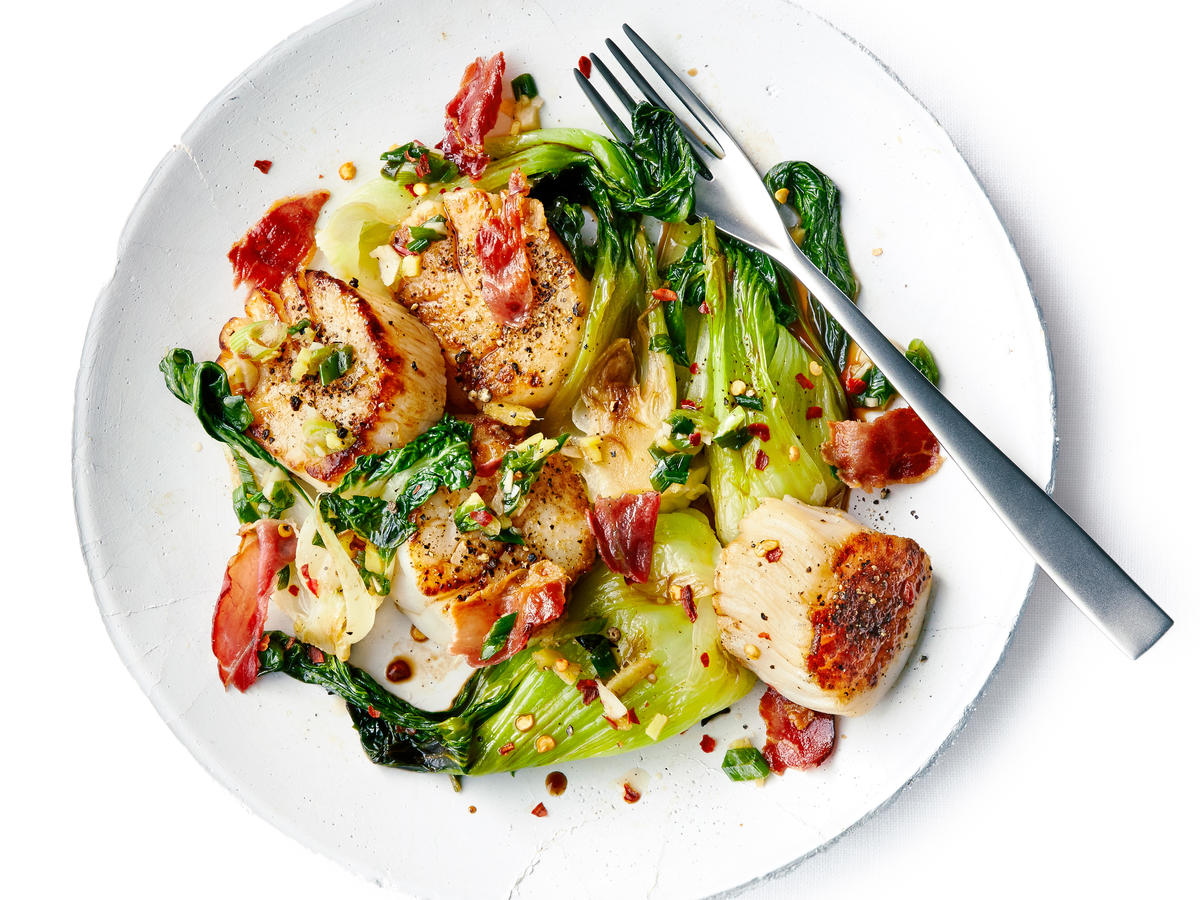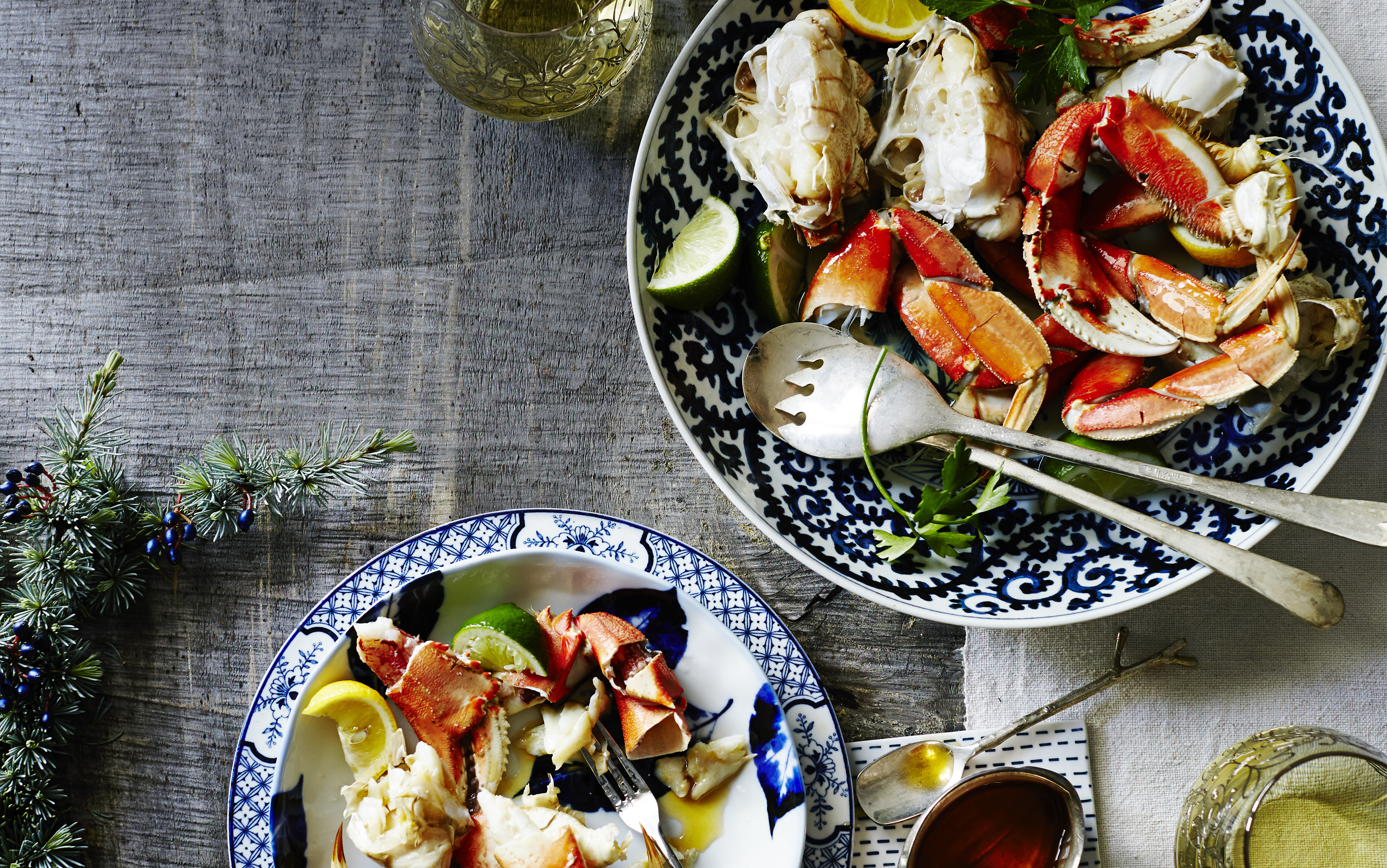
4 Smart Tips for Buying Top-Tier Seafood from the Grocery Store
There’s nothing fishy about this insider advice.

zoranm/Getty Images
Summer will be here before you know it and though the season might be synonymous with burgers and hot dogs you can easily whip up on your grill, the warmer months ahead always gives us a hankering forv fish for some reason. Just imagine: You, some sunshine, and some juicy, mouth-watering seafood. (And, if you wanted to throw a glass of wine into the mix, we have some perfect pairing ideas.) The West Coast might be packed with awesome restaurants to enjoy Dungeness crab, oysters, or even a bit of caviar, but you can also whip up a seafood-forward feast in the comfort of your own home.
Problem is, finding quality seafood at your supermarket can yield a lot of confusion. How do you know if you’re getting the best bang for your buck? Are there any telltale signs that a cut of fish is past its prime? And farm-raised fish—is it really that bad? Don’t worry, you’re not the only one who has some questions about shopping for seafood. That’s exactly why we tapped a few culinary pros to share their tips and tricks to stocking your fridge with fish.

Thomas J. Story
Pay Attention to Your Senses
According to Amber Evans, private chef and owner of Feast Collective Food & Beverage in Southern California, your senses are your very best shopping tools. For many, visual cues are one of the first ways you can tell the difference between seafood that’s up-to-snuff and just so-so. “Look for seafood that’s firm and glistening, not slimy,” she says. “If you’re buying seafood in styrofoam trays, skip anything sitting in liquid, especially if it looks milky.” Meanwhile, those who are on the hunt for a whole fish like branzino, the answer lies in their eyes. “Clear eyes are key,” she explains, “Cloudy ones are a no-go.”
Once you’ve given your supermarket’s inventory a once-over, bring your other senses into the mix. Evans says the best seafood should be cool to the touch and smell like the ocean, not a fish tank. “If something smells off, trust your gut and skip it,” she says.

Thomas J. Story
Treat Live Shellfish with Care
Though some people might settle for salmon filets or tuna steaks—which have been cut and prepped for the ultimate ease—adventurous home chefs might want to bring home some live shellfish. (You know, mussels, clams, and even a whole lobster!) But remember: Dealing with live shellfish is very different from a typical filet. For starters, Evans says you’ll have to follow an entirely different set of shopping rules, like looking for options with a “tightly closed” shell. “If they’re slightly open, give them a gentle tap,” she says. “If they don’t close up, it’s time to pass.” When looking for lobster, Evans recommends buying the livelier ones. “The more feisty, the fresher.”
Once you get home from the grocery store, it’s crucial to store your live shellfish properly. “Clams and mussels are alive,” Evans shares. “They need to breathe!” Instead of storing them in a plastic bag or sealed container, the chef recommends keeping them in a bowl covered with a damp towel in your fridge. “That way, they stay happy (and alive) until you’re ready to cook them,” she adds.

Greg DuPree
Know the Difference Between Frozen and Fresh
You might’ve heard that buying seafood from your grocery store’s freezer aisle is often cheaper (and fresher!) than going straight to the fishmonger, but is it always the case? Well, not exactly. Evans says that while fresh is great for grilling or sautéing, frozen is actually the safer bet for anything raw. “That’s actually what ‘sushi grade’ usually means,” she says. “It was frozen at a very specific temperature to kill off any parasites that would normally be destroyed during cooking.”
In addition to raw fish, Garrett Adair says frozen scallops are typically better than the “fresh” version. “The scallops come to the market frozen and are thawed, so frozen at the store saves you freshness,” explains the Sonoma, California-based chef. When it’s time to cook your frozen fish, Evans says thawing it slowly in the refrigerator keeps the texture intact and reduces the risk of bacteria growth.
However, if you do purchase fresh fish, Adair says it’s in your best interest to cook it as soon as possible. “Don’t buy fish to hold or refreeze,” Adair adds. “You should prepare it for the same day as most fish are always frozen and thawed at least once.” Refreezing, he explains, can often damage the quality.

Iain Bagwell
Do Your Research
When it comes to buying seafood, a little bit of research can often go a long way—especially when deciding between farm-raised and wild-caught fish. Though Adair says wild-caught fish generally has a richer taste and higher omega-3 fatty acids, farm-raised doesn’t always deserve the bad rep it has garnered. “Farm-raised seafood isn’t inherently bad,” he explains. “Its quality depends on farming practices. Look for sustainably sourced options with better environmental and health.”
If you’re buying pre-packaged seafood, Evans recommends looking for the Marine Stewardship Council logo, a little blue fish that signifies meeting certain environmental standards. “When in doubt, use that smartphone to your advantage,” she adds. “A quick search can tell you a lot about the brand or help you find stores nearby that carry responsibly sourced options.”
Buying straight from your supermarket’s fishmonger? Be sure to ask them about the source or any prep tips. “One of the biggest mistakes is when people buy fish they don’t know how to prepare properly,” Adair says. “Look up recipes before buying or ask the ‘butcher’ how to prepare.” Psst…need some yummy seafood recipes? We got you covered.
